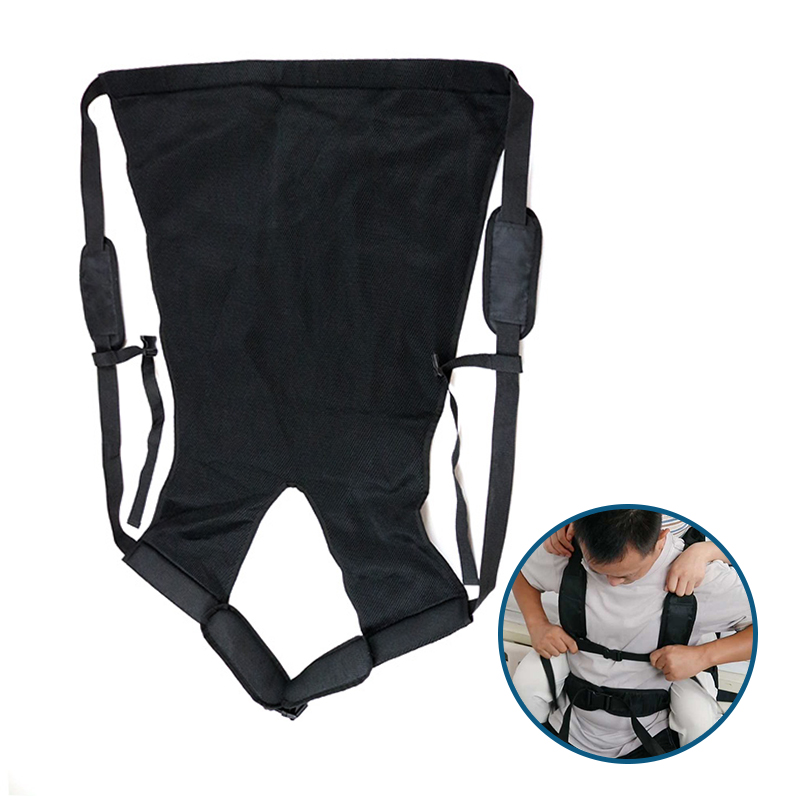In the demanding and often physically strenuous field of healthcare, ensuring both patient safety and caregiver well-being is paramount. One simple yet incredibly effective tool that significantly contributes to both is the gait belt. This guide, specifically for medical professionals, will explore the critical role of gait belts in modern healthcare, focusing on their proper use, benefits, and how they enhance patient safety and mobility.
1. Understanding the Gait Belt: A Definition and its Purpose
A gait belt, also known as a transfer belt or a walking belt, is a fabric belt that is placed around a patient’s waist to assist healthcare professionals in safely transferring, ambulating, or repositioning patients. It is designed to provide a secure point of contact for caregivers, reducing the risk of injury to both the patient and the healthcare provider during these maneuvers.
2. Key Benefits of Using Gait Belts in Medical Practice
Implementing gait belts into standard patient handling protocols offers a wide range of benefits:
- Enhanced Patient Safety:
- Reduced Risk of Falls: Gait belts provide a secure grip, allowing caregivers to better control and support patients during transfers and ambulation, minimizing the risk of accidental falls.
- Improved Patient Stability: The belt offers a stable point of contact, helping patients feel more secure and balanced during movement, especially those with weakness or balance issues.
- Minimized Skin and Tissue Damage: Compared to pulling directly on limbs or clothing, gait belts distribute force more evenly, reducing the risk of skin tears, bruising, and discomfort.
- Improved Caregiver Ergonomics and Safety:
- Reduced Back and Shoulder Strain: Gait belts encourage caregivers to lift with their legs and core, rather than their backs, significantly decreasing the risk of back injuries and shoulder strains.
- More Controlled and Safer Transfers: The secure grip provided by the belt allows for more controlled and predictable patient movements, making transfers safer for both the patient and caregiver.
- Decreased Caregiver Fatigue: By promoting better body mechanics and reducing strain, gait belts can help reduce caregiver fatigue, improving overall well-being and job longevity.
- Promoted Patient Mobility and Independence:
- Facilitation of Ambulation: Gait belts can provide support and confidence to patients during ambulation and rehabilitation exercises, encouraging greater mobility.
- Increased Patient Participation: Patients may feel more secure and willing to participate in transfers and movement when a gait belt is used, fostering greater independence.
3. Proper Gait Belt Application and Usage Techniques: A Step-by-Step Guide
To maximize the safety and effectiveness of gait belts, proper application and usage techniques are crucial:
- Preparation and Communication:
- Assess Patient Needs: Determine if a gait belt is appropriate for the patient based on their weight-bearing ability, cognitive status, and medical condition.
- Explain the Procedure: Clearly explain to the patient what you are going to do and why you are using a gait belt to alleviate any anxiety and ensure cooperation.
- Proper Belt Placement:
- Position the Belt: Place the gait belt around the patient’s waist, typically over clothing, ensuring it is snug but not too tight. You should be able to slide your fingers comfortably under the belt.
- Avoid Ribs and Abdomen: Position the belt above the hip bones and below the rib cage to avoid pressure on sensitive areas and ensure a secure fit.
- Secure the Buckle: Fasten the buckle securely, ensuring it is properly locked and will not slip during the transfer.
- Safe Transfer and Ambulation Techniques:
- Use Proper Body Mechanics: Maintain a wide base of support, bend your knees and hips, and keep your back straight when using the gait belt to lift or assist.
- Grip the Belt Properly: Use an underhand grip on the gait belt, avoiding lifting directly upwards. Grip points should be secure and comfortable for you.
- Communicate and Coordinate: Communicate clearly with the patient throughout the transfer or ambulation process, coordinating movements and ensuring smooth transitions.
- Avoid Pulling on the Belt: Use the gait belt primarily for guidance and stability, not for forcefully lifting or pulling the patient. Encourage the patient to assist as much as possible.
- Post-Transfer and Removal:
- Ensure Patient Stability: Once the transfer is complete, ensure the patient is safely positioned and stable before removing the gait belt.
- Remove the Belt Carefully: Unfasten the buckle and remove the gait belt gently, avoiding any sudden movements that could startle or unbalance the patient.
- Inspect Skin: Briefly check the skin under the gait belt for any signs of irritation or pressure after removal, especially for patients with fragile skin.
4. Best Practices and Safety Guidelines for Gait Belt Use
Adhering to best practices and safety guidelines is essential for maximizing the benefits and minimizing risks associated with gait belt use:
- Regular Staff Training: Provide ongoing and hands-on training for all staff involved in patient handling on proper gait belt application, techniques, and safety protocols.
- Proper Belt Maintenance and Inspection: Regularly inspect gait belts for wear and tear, fraying, or damage to buckles and replace them as needed. Clean belts according to facility protocols to maintain hygiene.
- Individualized Patient Assessment: Always assess each patient individually to determine if a gait belt is appropriate and safe for their specific needs and condition.
- Use in Conjunction with Safe Lifting Policies: Gait belts are a valuable tool but should be part of a comprehensive safe patient handling program that includes lift equipment and other assistive devices when appropriate.
- Never Use on Bare Skin: Always apply the gait belt over clothing to prevent skin irritation or damage.
- Avoid Use for Lifting in Certain Situations: Gait belts are generally not intended for lifting patients from the floor or lifting patients vertically. Use appropriate lifting equipment for these scenarios.
- Consider Patient Comfort and Dignity: Be mindful of patient comfort and privacy when applying and using a gait belt. Explain the procedure clearly and ensure the belt is not applied too tightly.
5. Conclusion: Gait Belts as Essential Tools for Patient Care
Gait belts are indispensable tools in modern healthcare settings. When used correctly and as part of a comprehensive safe patient handling program, gait belts significantly enhance patient safety, improve caregiver ergonomics, and promote patient mobility. By mastering the proper techniques and adhering to safety guidelines, medical professionals can effectively utilize gait belts to provide safer, more efficient, and more compassionate care to their patients.

